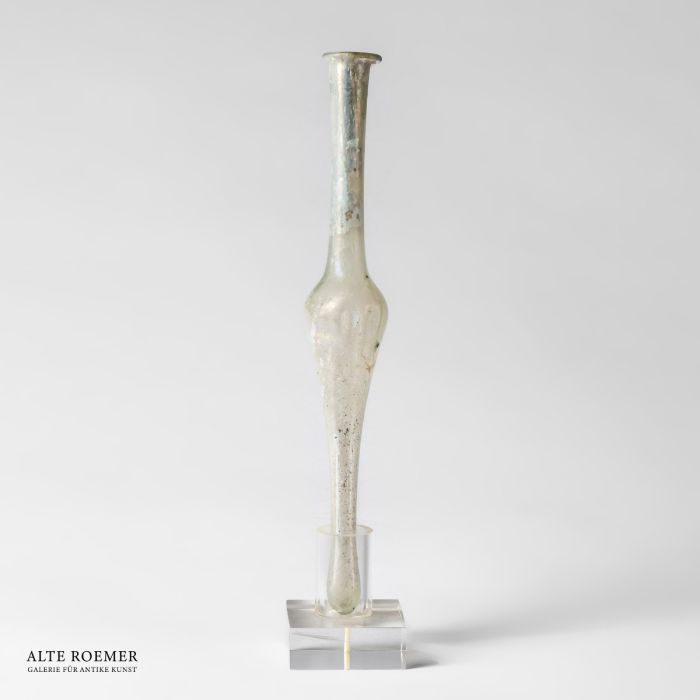Spindle shaped Roman unguentarium
€950
available
Object number
AR3545-13
| Object: |
Spindle shaped Roman unguentarium
|
| Material: |
Glass.
|
| Period: |
4th century AD. Late Roman Imperial period. |
| Description: |
A slender, spindle shaped glass vessel with a central thickening and an outwards pointing lip. The center section is vertically indented all around for decoration, similar to Roman indented beakers. The unguentarium is relatively large and free blown from almost colorless glass. The closest comparable finds are known from the Balkans and Cyprus.
|
| Dimensions: |
193mm height.
|
| Condition: |
Perfect condition. With subtle find deposits and delicate iridescence. Comes with a modern acrylic stand, a tube on a block into which the vessel can be placed.
|
| Provenance: |
Acquired by us in 2024 from the Kaufmann family collection, Germany. Acquired by the founder of the collection, E. Kaufmann, between 1975 and 1989. A collector's note for the piece is available in copy. It was sold by the German art dealer couple Anne and Dr. J. Christof Roselt. Dr. Roselt is better known for his tenure as director of the Bergisch Museum of Burg Castle, Germany, during which he played a pivotal role in developing and curating its cultural-historical collection.
|
| References: |
Almost identical glasses come from the 3rd to 4th century AD necropolis beneath St. Sophia's Church in Sofia, Bulgaria, and are housed in the museum there. Cf. Musée d'art et d'histoire Genève, acc. no. 012862, the museum attributes the very similar glass as undoubtedly coming from Cyprus. Cf. North Carolina Museum of Art, obj. no. 92.7.2. Cf. Y. Israeli, Ancient Glass in the Israel Museum, p. 291, nos. 386 and 387. For a very similar glass in the art market, see Bonhams London auction 6 July 2021, lot 25, sold for 2550 GBP, equivalent to approximately 3000 EUR at the time. |
| Authenticity: |
We unconditionally guarantee the authenticity of every artefact, all items are subject to our lifetime return policy on authenticity.
|


